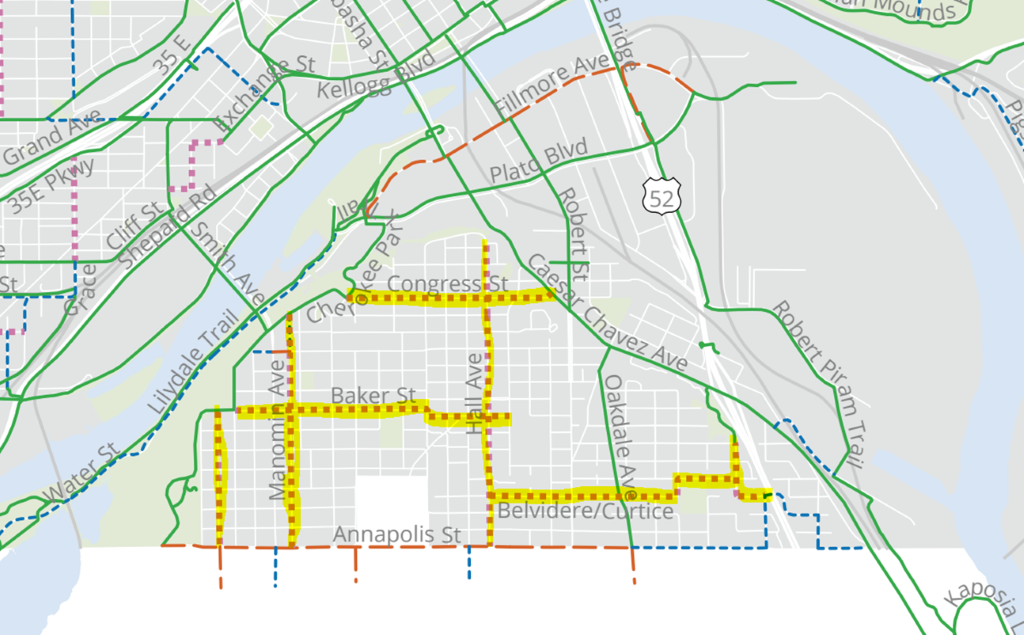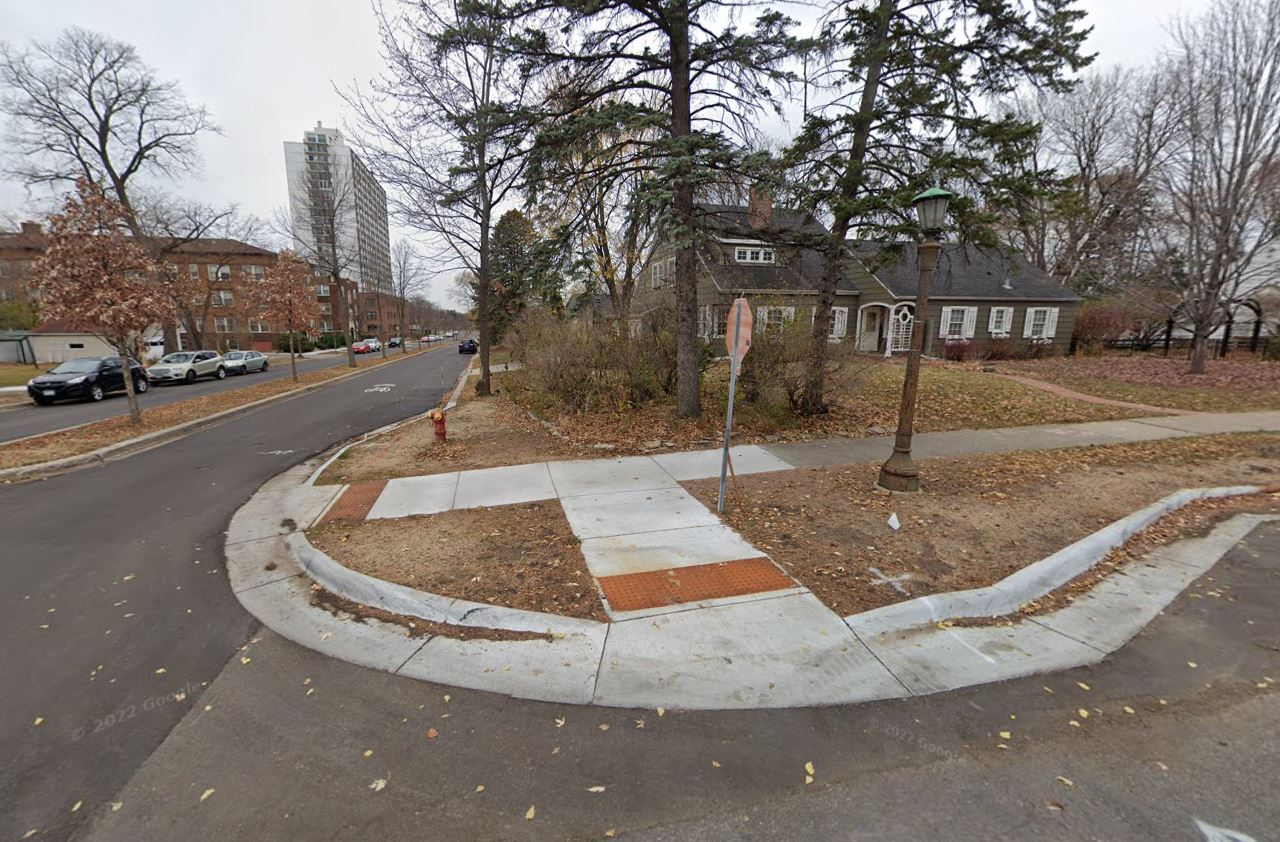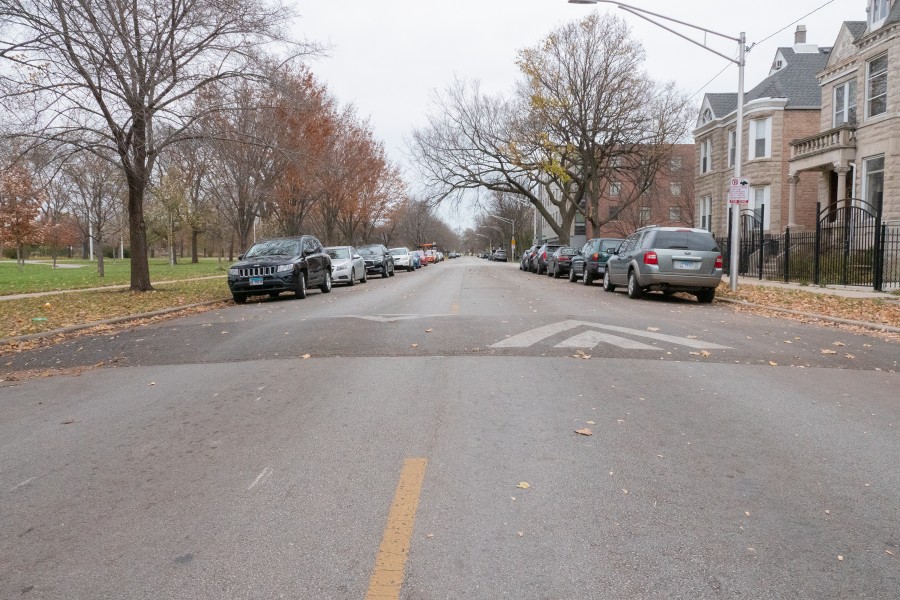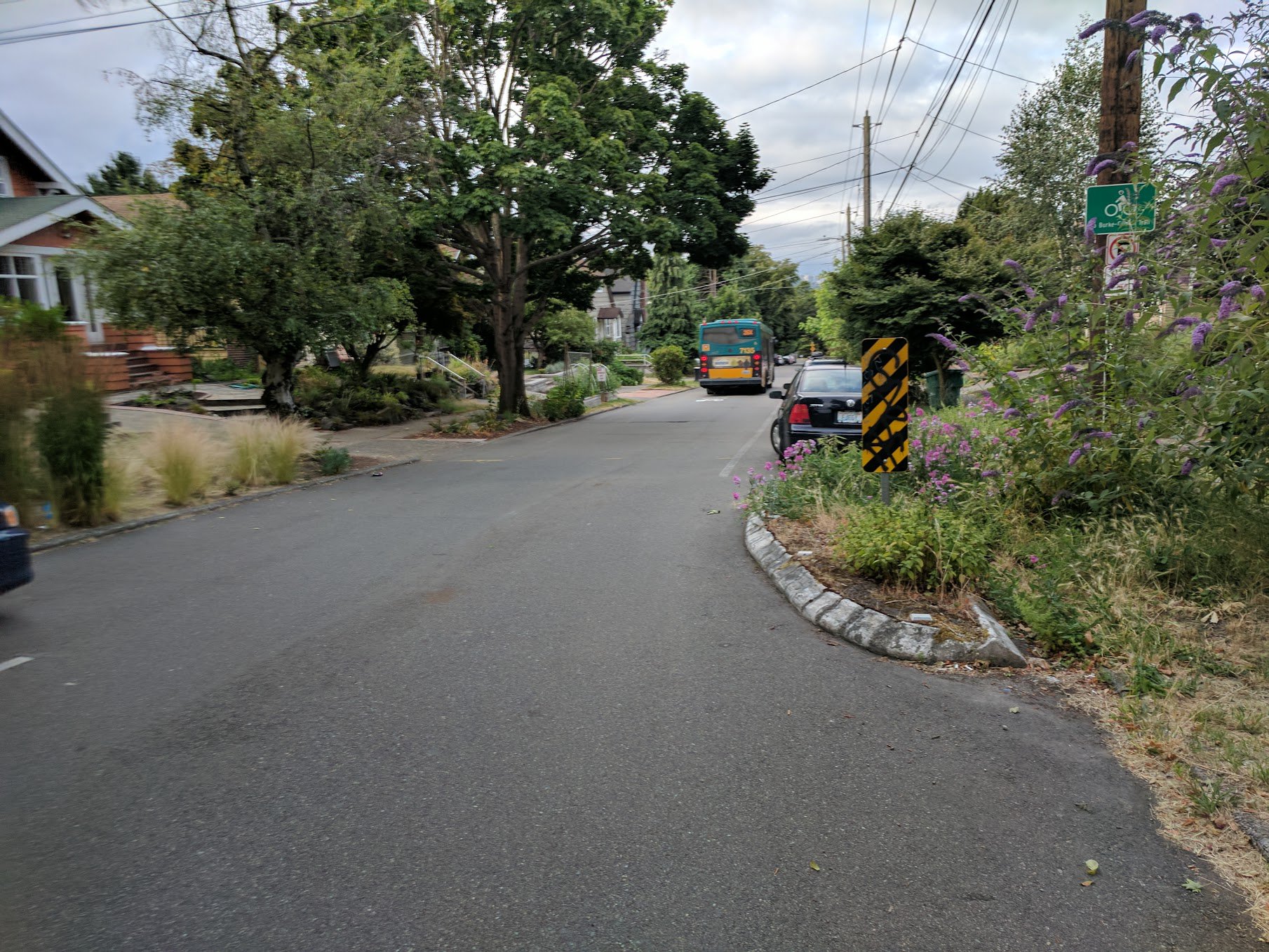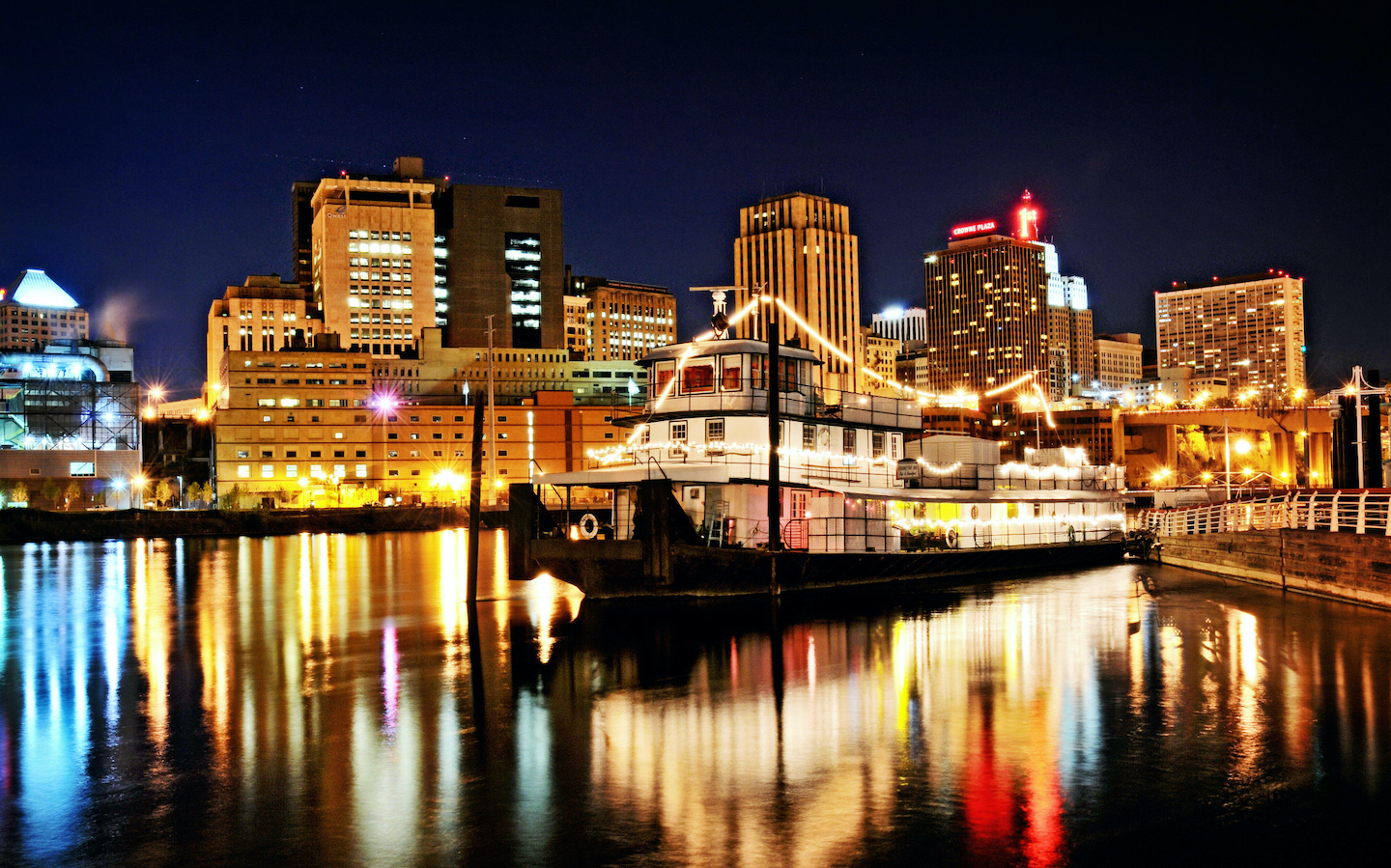What is a Bicycle Boulevard?
Bicycle boulevards (also called neighborhood greenways or neighborways) are streets with low motorized traffic volumes and speeds, designed and designated to give people traveling by bike, foot, or other mobility assist devices such as scooters or wheelchairs travel priority.
Bicycle Boulevards use pavement markings and traffic calming tools to create a safe and convenient route for people, especially at crossings of busy cross streets. These infrastructure measures are usually used in combination to create a safe and continuous bicycle boulevard.
The infrastructure measures shown below can be installed as permanent structures with concrete or temporary installations using paint and bollards. Not all of the infrastructure measures below are currently in use in the City of Saint Paul.
There are bicycle boulevards in Saint Paul on Charles Avenue, Margaret Street, Jefferson Avenue, and Griggs Street North. These current bicycle boulevards in Saint Paul have mini traffic circles, bumpouts, sign reconfiguration, traffic diverters, and improved navigation signage. Bicycle boulevards are utilized around the country, some of the facilities elsewhere feature additional treatments like Chicanes/Pinch Points.
